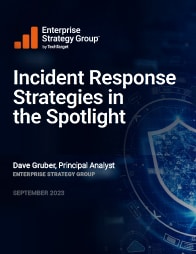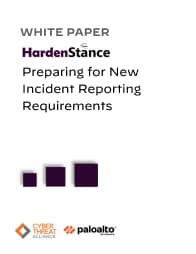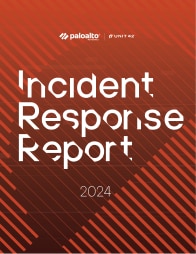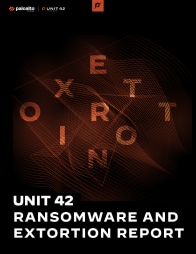GenAI is unlocking new opportunities for everyone - including attackers
Organizations are integrating generative AI (GenAI) into their business processes and building internal GenAI tools. And attackers are working to undermine and exploit these mechanisms. Safely adopting effective, beneficial AI takes understanding how this powerful technology can both propel your organization forward and expose it to new risks.
The Unit 42 Threat Frontier Report gives you an in-depth look at AI as a concept and what it offers to organizations and attackers alike. Here are the 4 key takeaways to help you achieve the full potential of AI and optimize protection against dynamic AI-powered threats.
1. Conventional cybersecurity tactics are still relevant
Foundational concepts like network segmentation, Zero Trust network architecture and identity and endpoint protection remain effective in defending against even novel threats.
Don't underestimate the level of defense these tactics provide. Instead, continue your efforts toward Zero Trust architecture. Patch your systems more quickly and more comprehensively. And read the Recommendations for Defenders in our incident response reporting to learn what security measures are most effective versus today's attackers.
2. AI adoption is happening faster than any previous enterprise technology. A lot faster.
Attackers are among the users driving this rapid rate of adoption. They're already hard at work using GenAI to make their attacks faster, larger scale, more efficient and highly sophisticated.
So, while conventional cybersecurity tactics are still vital for your defenses, adding AI-specific defenses is mission-critical preparation for the future. Why? Because…
Existing applications are already becoming AI-enabled with natural language processing. And new AI-first apps will be built with AI capabilities integrated from the start, not added on later.
Unit 42 research shows that attackers use GenAI to exploit software and API vulnerabilities, write malware and create elaborate phishing campaigns.
Time to Reach a Billion Users
The internet 00 years
Mobile technology 00 years
Gen AI The next 00 years

The internet 00 years
Mobile technology 00 years
Gen AI The next 00 years

3. Shadow AI is probably already in your workplace
Your employees are almost certainly using AI tools. Raise your hand if you're one of them. (Go on. No one's looking.) Now, the questions leaders need to ask are: "How can I be aware of the tools that are being used and what controls do I have in place?"
Here's what we recommend:
Create, socialize and publish rules of engagement that your organization must follow for using AI tools. Then customize those rules to the context of your existing data security requirements.
Like SaaS and IaaS cloud transformation, you should expect resistance on some familiar aspects:
How do I get an exception to the policy?
We already pushed to production.
What is the process for approval?
This is going to slow down innovation (or revenue, or raise costs, or, or, or…)
4. What can I do to secure AI for my organization?
Let's pretend you asked an AI model trained by Unit 42 for some recommendations about securing AI. Here's what that conversation might look like.
Want to learn more?
Check out the Unit 42 Threat Frontier Report to learn how to leverage the benefits of GenAI while mitigating risks and fortifying your organization against the current and future threats of the AI era.





